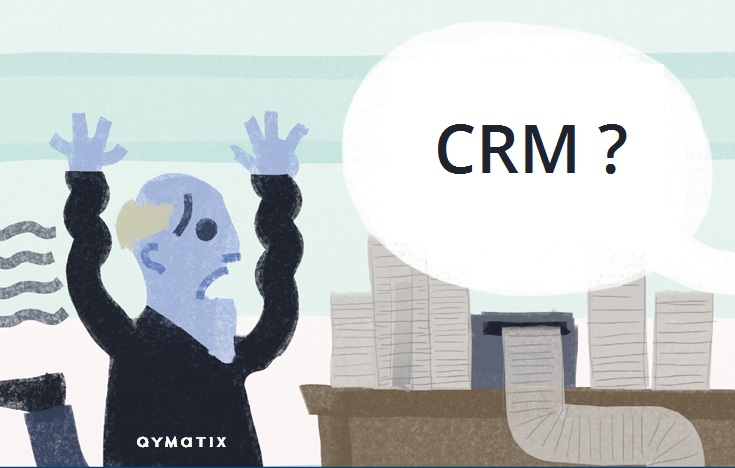Salesforce brake: CRM

CRM or Customer Relationship Management refers to a company philosophy that is primarily pointed towards the customer. Almost all companies use special software solutions, but the fewest systems truly fulfil their function. Why this is the case, explains Ingo Sievert, Managing Director of SP Integration GmbH in conversation with Helmut König.
Helmut König: Mr Sievert, what is important for a CRM system to satisfy its original function?
The key to success lies in user acceptance. In contrast to ERP solutions, a user does not need a CRM for his daily work. An invoice is generated and posted from the ERP – here the user has no choice. Many ERP solutions show this enforced use through less comfortable user interfaces. The process and the function are in the foreground – the human being serves the process. In a good CRM solution, the process serves the employee. If a sales team say they need more time after the introduction of the CRM than before, something has gone awry.
Why do so many CRM solutions do not work?
With the introduction of a new expensive CRM solution too much at once is often wanted. All possible functions should be ready for launch right away. This is a challenge for all parties involved. Sales and marketing are to describe all processes immediately and comprehensively, something that rarely succeeds. Best practice solutions, which are known in the market, are usually ignored. Some CRM vendors would like to implement as large a project as possible and generate unnecessary complexity from day one. The management expects the CRM solution to solve all problems. However, sales controlling, employee motivation and customer loyalty are tasks that a CRM software can support, but cannot solve.
What is the role of communication between the customer and the CRM software vendor?
Most CRM solutions are good to very good. It depends on what you make of it. While communicating before the project begins, both sides must actively listen. The provider should recognise in which aspects the CRM implementation is beneficial for the customer. For this purpose, it may be necessary to contact a specialist who understands both the sales concerns of the client and the implementation possibilities of the CRM system. In my opinion, the trust between the customer and the CRM vendor is of crucial importance. The customer should also check with references whether the selected CRM solution the right choice is.
Which steps can be taken to make a non-functioning CRM system work?
We mainly do not spend much of our day-to-day introducing new systems, but by bringing existing ones into operation. In our market, we encounter numerous customers who are behind their CRM implementation and not happy with the results so far. The current existing CRM solution makes the sales representative “only work more” while the possible benefits are not clear to the sales team. Some solutions have been so much adapted to the customer that an update to any current CRM software version becomes more expensive than the first implementation.
Often the right step to a good CRM solution is possible without the need for new software licenses. A CRM software should help sales and marketing to save time and money and to get better information. Sales processes must be simplified and the complexity reduced to achieve this. 96 Fields on a customer screen can be a safe description of a client – but in practice, they are never maintained and only lead to a considerable additional effort. This usually means that key account managers keep a “shadow CRM” in Excel tables and only enter vital information in the “official CRM”.
When is a CRM software ready for use?
A CRM system is ready to use when Key Account Managers willingly use it, and they recognise the value it adds to their job. As easy as this sounds, a CRM solution is ready once this requirement is achieved. Even a 70 % solution can be ready and give great benefits. If 70 % of the requirements are illustrated, and this 70 % are also used, much has already been achieved. Today, many sophisticated offerings promise social media connectivity and multi-channel functionality. Finding an address, avoiding duplicates, and writing a letter remains a core feature of CRM. Buyers often hate these simple functions, i.e. placing a message in a CRM, and if it costs too many clicks, it is simply not made.
A CRM system is never fully implemented. User requirements continue to evolve, and new challenges are always emerging. I see significant advantages in an iterative introduction process. Less functionality is initially worth more than high complexity. In steps (for example every 3-6 months), the CRM solution is extended by necessary and value-adding functions
What are the costs of implementing a new CRM system or the upgrade of an existing software and what economic benefits can be achieved?
It is hard to answer this question in general terms. Once CRM transparency has been lost, it must be brought back to daylight. The revision of an existing CRM implementation can require between 30 and 250 person-days. If customer-specific software development supplements the CRM standard configuration, the effort can go well beyond this. Sometimes it is quite simple, and sometimes an entire renovation is more expensive than a whole new start. A bad or unused CRM solution can be much more costly. CRM is not a purpose in itself – without a working CRM, the sustainable development of an entire company can be endangered.
Do you have a tip for the companies that are concerned with the introduction or upgrade of an existing CRM system?
Here as with other software solutions: reduced complexity increases acceptance. Without the user acceptance, every CRM project fails. Plan a step-by-step introduction to avoid overwhelming sales representatives and organisations.
CRM is not a one-time investment. Provide an annual budget for the expansion and further development of the CRM functionalities. This should be considered when planning and budgeting.
